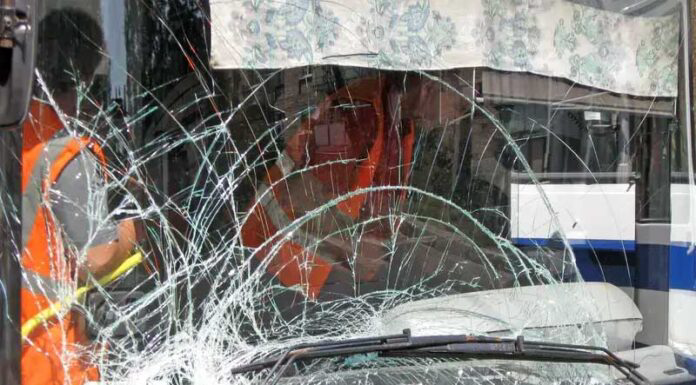A bus carrying mourners from a funeral overturned and plunged into a ditch along the Kisumu-Kakamega Highway in western Kenya on Friday afternoon, August 8, killing 25 people and injuring 20 others. The accident occurred as passengers were returning from a burial ceremony, with all victims believed to be from one extended family.
According to Peter Maina, a regional traffic enforcement officer for Nyanza province, the driver lost control of the bus as it approached a roundabout at high speed. The vehicle veered off the road and overturned into a ditch in an area notorious for deadly accidents. Among the immediate fatalities were 10 women, 10 men, and a 10-year-old girl who died at the scene.
Twenty passengers sustained injuries in the crash, with five in serious condition. Four of the injured later died in hospital, bringing the total death toll to 25, according to Fredrick Ouma Oluga, the principal secretary in charge of medical services in Kenya. The additional fatalities were confirmed by hospital officials treating the survivors.
The passengers were traveling from a burial ceremony at Nyahera to Nyakach, covering a distance of approximately 62 kilometers (38.5 miles). The vehicle involved was a secondary school bus being used for funeral transport, with no students aboard at the time of the accident. Police reports indicate the cause of the crash remains under investigation.
Kenya’s Ministry of Health issued an urgent call for blood donations to help survivors and extended condolences to the bereaved families. The ministry also urged motorists to exercise greater caution on the nation’s roads, particularly given the country’s ongoing struggle with fatal traffic accidents.
President William Ruto responded to the tragedy by calling on authorities to “quickly book those responsible for any acts of negligence leading to the accident and address all traffic violations to ensure road safety across the country.” The National Transport and Safety Authority of Kenya pledged to support investigations into the crash.
The accident represents the latest in a series of deadly incidents on Kenyan roads during the same week. On Thursday, August 7, nine people died when a bus collided with a train at a railway crossing in Naivasha in Nakuru County. The victims were among 32 workers traveling to their jobs when the collision occurred.
Earlier in the week, six people died when a light aircraft belonging to a medical charity crashed in a residential area of Nairobi. The Cessna Citation XLS, operated by AMREF Flying Doctors, lost radio and radar contact three minutes after takeoff from Wilson Airport while en route to Hargeisa, Somalia. Two doctors, two nurses, and two members of the public were killed in that incident.
On Saturday, August 3, another crash near Nairobi claimed seven lives, according to media reports. The series of accidents highlights Kenya’s persistent road safety challenges, with officials frequently citing speeding drivers as a primary cause of fatal crashes.
Road accidents are common throughout Kenya and the broader East African region, where roads are often narrow and in poor condition with numerous potholes. The infrastructure challenges, combined with speeding and reckless driving, contribute to the high fatality rates on Kenyan roads.
Statistics reveal the severity of Kenya’s road safety crisis. Between 2020 and 2021, road deaths in the country increased by more than 20 percent. In 2021 alone, more than 4,500 people were killed and over 16,000 injured in traffic accidents across the nation.
The Kisumu-Kakamega Highway, where Friday’s fatal crash occurred, has gained notoriety for frequent deadly accidents. Traffic enforcement officials have repeatedly identified this stretch of road as particularly dangerous for motorists and passengers.
Local authorities continue to grapple with enforcement challenges and infrastructure limitations that contribute to the high accident rates. The government has faced mounting pressure to implement stricter safety measures and improve road conditions to prevent similar tragedies.
The funeral bus crash has prompted renewed calls from community leaders and health officials for comprehensive road safety reforms. The incident has placed additional strain on Kenya’s already stretched healthcare system, necessitating emergency blood drives and medical resources for survivors.








